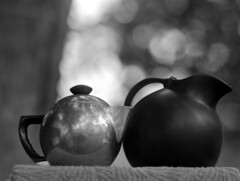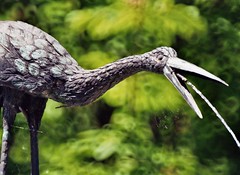Difference between revisions of "Bokeh"
m |
(added sample photo & attributions) |
||
| Line 1: | Line 1: | ||
{{glossary}} | {{glossary}} | ||
| − | + | {{Flickr_image | |
| + | |image_source= http://www.flickr.com/photos/vox/4886891756/in/pool-camerawiki | ||
| + | |image= http://farm5.static.flickr.com/4093/4886891756_3526169295_m.jpg | ||
| + | |image_align= right | ||
| + | |image_text= Smooth and unobtrusive bokeh <br>(Kodak Anastigmat barrel lens) | ||
| + | |image_by= Voxphoto | ||
| + | |image_rights= non-commercial | ||
| + | }} | ||
{{Flickr image | {{Flickr image | ||
| image_source=http://www.flickr.com/photos/89864432@N00/3589772843/in/pool-bokehoftheday | | image_source=http://www.flickr.com/photos/89864432@N00/3589772843/in/pool-bokehoftheday | ||
| image=http://farm4.static.flickr.com/3175/3589772843_5445e7f619_m.jpg | | image=http://farm4.static.flickr.com/3175/3589772843_5445e7f619_m.jpg | ||
| image_align=right | | image_align=right | ||
| − | | image_text= | + | | image_text= Distracting ring bokeh<br>from a mirror telephoto lens |
| + | |image_by= uwekulick | ||
| + | |image_rights= with permission | ||
}} | }} | ||
Revision as of 15:18, 14 February 2011

|
| Smooth and unobtrusive bokeh (Kodak Anastigmat barrel lens) image by Voxphoto (Image rights) |

|
| Distracting ring bokeh from a mirror telephoto lens image by uwekulick (Image rights) |
Bokeh (Japanese "boke" = blur or haze) is how the lens draws unsharp image areas. The effect becomes notable when the unsharp back- and/or foreground has significant contrasts, especially when small light areas contrast to darker surroundings. A typical bokeh effect is given by some lenses with six-blade aperture. Light points of the unsharp fore- or background are projected by these lenses as hexagonal lighter areas onto the image. Portraiture needs lenses with a pleasant or a soft undisturbing bokeh. Almost round apertures given by multi-blade diaphragms are always a good precondition for a nice Bokeh, but don't necessarily deliver one. It depends on where in the lens the diaphragm is placed. In some extra-short lens constructions and zoom lenses necessary compromises might reduce nice bokeh results despite of nearly round aperture.